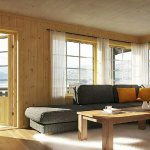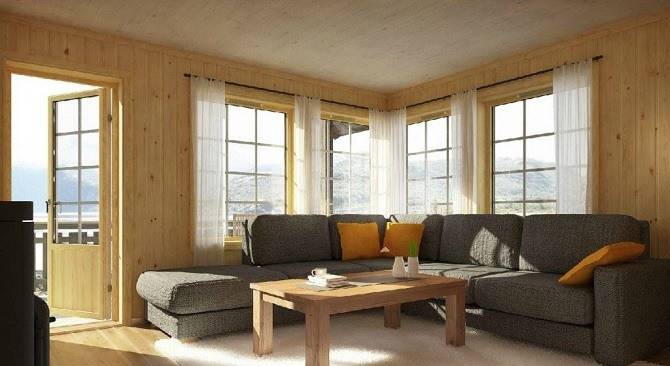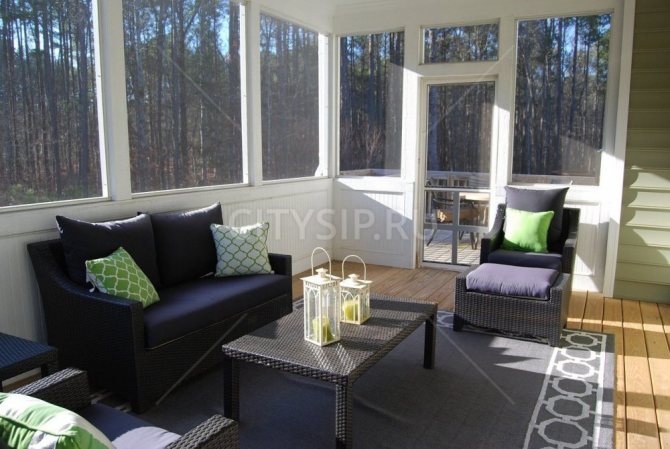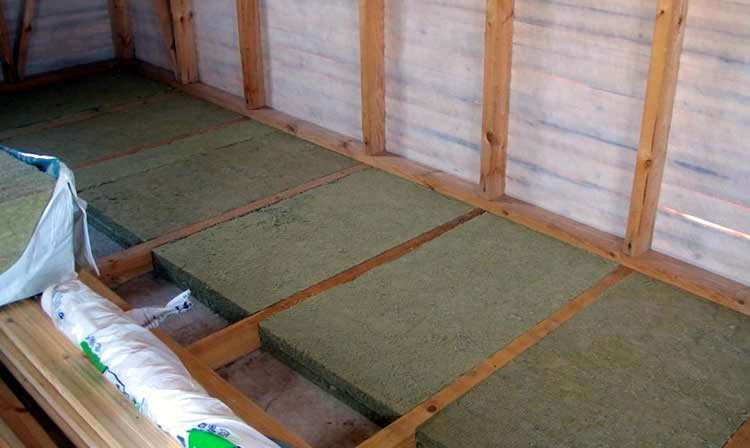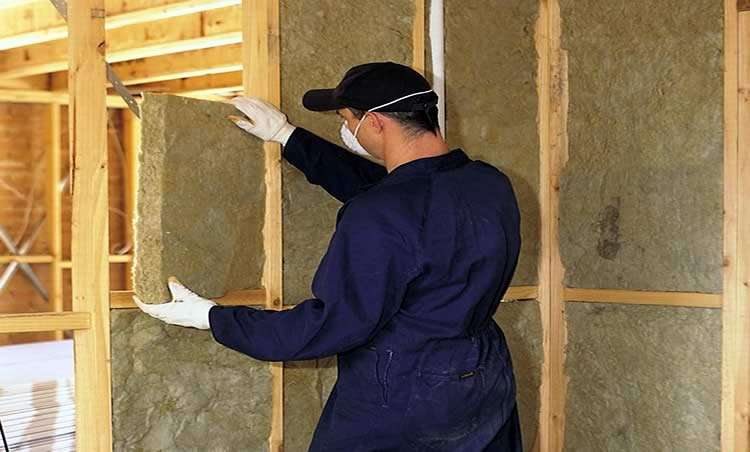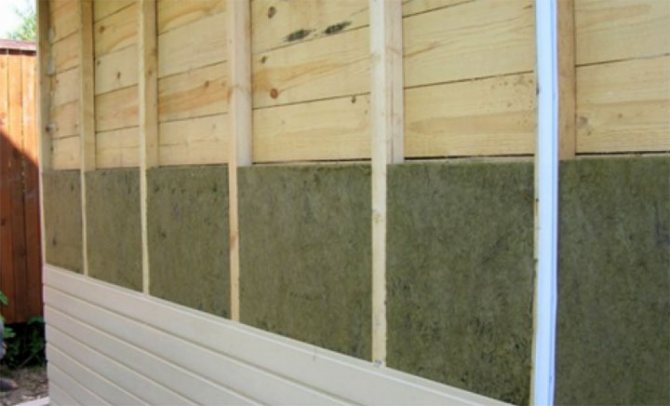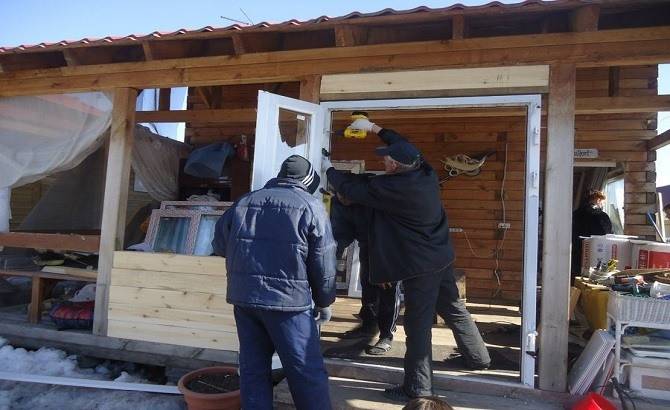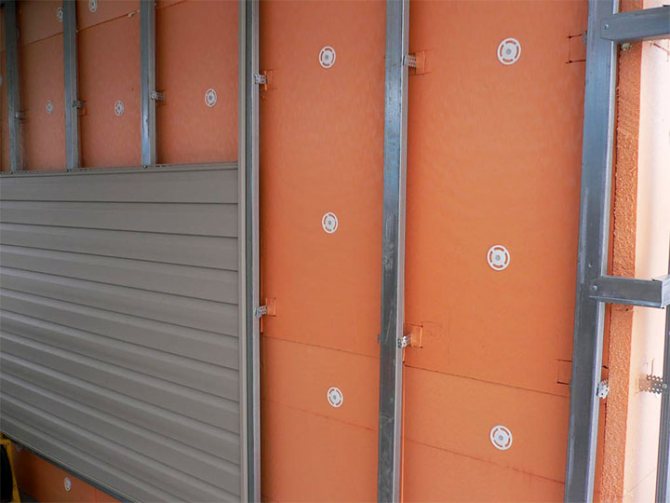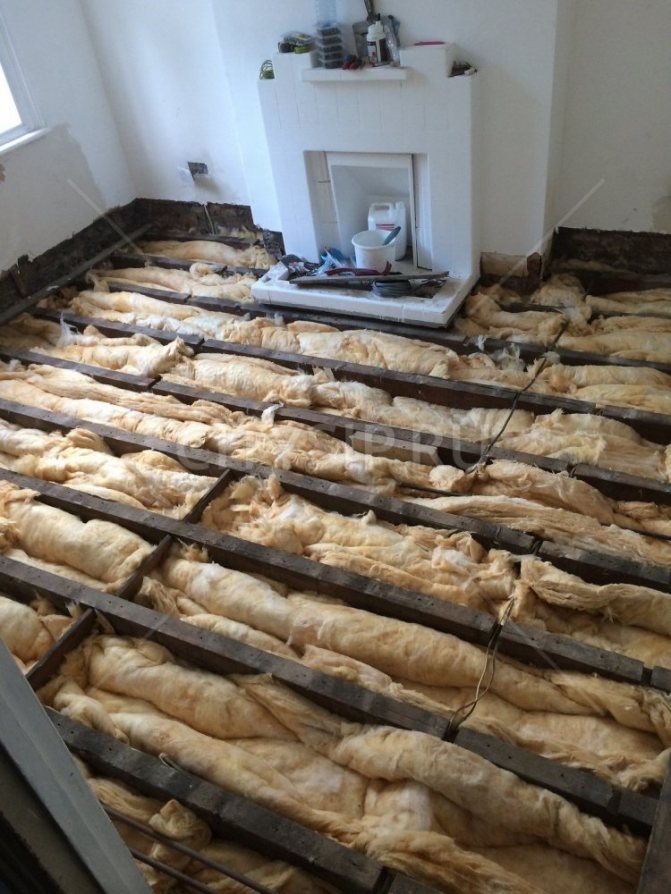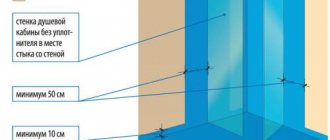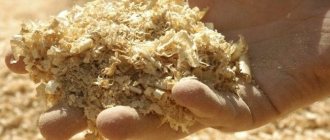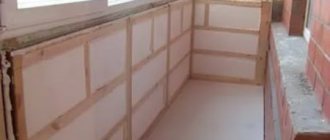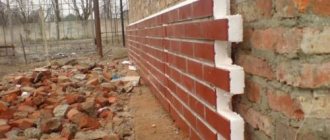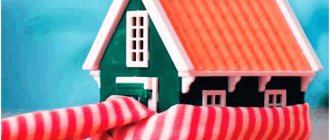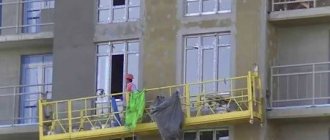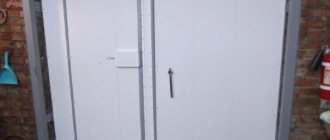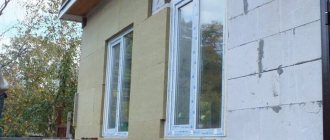If you have a veranda, then you can say that you are a happy person. This is a great place to spend time in the summer. The veranda for each owner serves a specific purpose that he pursues. This is an additional area of the house that can be used for any purpose. Only in the winter time, the veranda can play a cruel joke with you. The whole house can lose heat because of it. And in the veranda itself it will be simply unrealistic. To make your stay in the house and in the veranda comfortable, we recommend that you insulate your veranda.
However, this is easier said than done. From this article, you will learn how to insulate a veranda in a wooden house or a brick house. What materials to use when working? Insulation from the outside or from the inside? We will consider all this further.
What way to insulate the veranda to choose
There is a lot of controversy regarding the type of veranda or terrace insulation. Some say that it is better to do the insulation of the veranda from the inside with your own hands, while others are supporters of the method of insulation from the outside. But which one is better? We will shed light on this mystery by comparing the advantages and disadvantages of both methods.
Let's start with insulating the veranda inside. Here are the advantages of this method:
- Works are carried out at any time of the year and in any weather.
- You can have free access to the surface at any height.
- You can insulate every surface in one go - the floor, all the walls and the ceiling.
- you need to dismantle the finished coating;
- with this option, the freezing point begins to shift into the wall, which is fraught with its gradual destruction;
- a layer of insulation can take up precious space inside;
- garbage accumulates inside during work;
- some materials may have harmful substances, so you will have to dwell only on environmentally friendly ones.
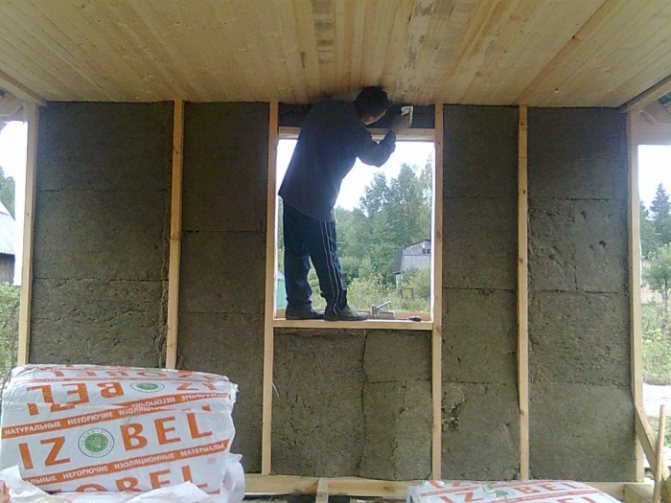
True, this method of insulation has its drawbacks:
This was a comparison of insulation from the inside. And what about the external method? The advantages are as follows:
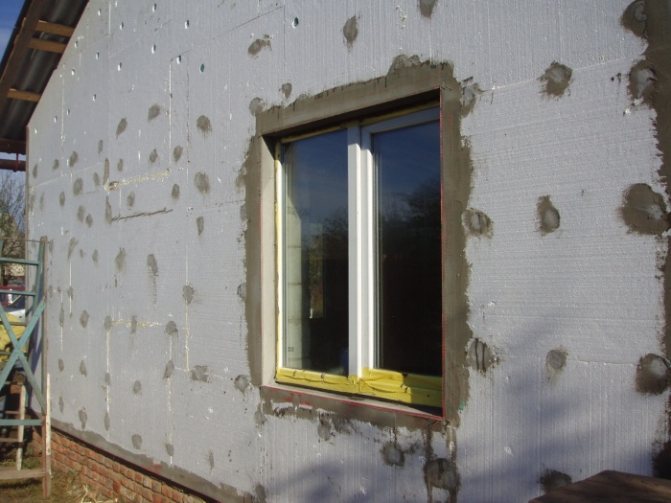

As for the disadvantages of warming the veranda outside, there are several of them:
- work can only be performed in good weather;
- it is difficult to access every surface, especially the roof.
We have given you some statistics, and you can already decide for yourself which insulation option to choose. Analyze the pros and cons, and consider your circumstances. When you have chosen a method of insulation, you can think of an insulating material.
How to insulate a wooden house outside with polyurethane foam
Thermal insulation of a wooden house outside with polyurethane foam extends the life of the building. Polyurethane foam has a low coefficient of thermal conductivity, which indicates its ability to retain heat. Easy to apply on all types of surfaces and has good adhesion. Its service life is from 30 years. Large surface areas can be quickly insulated using airless spraying.Also, polyurethane foam is environmentally friendly and non-combustible material, does not emit harmful substances into the atmosphere.
When the walls of the house are treated with antiseptics and fire retardants, the cracks are closed with jute, you can proceed to the installation of the lathing, and then to the PPU dusting. Two people wearing protective suits and masks should apply the insulation using airless spray equipment. One sprays, the second controls the level of pressure and temperature. Before this, mix and warm up the PU foam components. Apply material 25 mm thick. After the first layer has dried, spray on the second one. Then attach a vapor-permeable membrane film for waterproofing, install the lathing on top and close the structure with cladding. This can be siding, curtain wall or plaster.
Warming of the veranda - list of materials
There are so many heaters in our time that it is sometimes difficult to make a choice. All of them are good in their field and are used by builders. Nevertheless, over time, each material has received a certain reputation, so you can make a certain list of the best materials for insulation. Let's take a look at it, as it was compiled based on user feedback, characteristics and balance of advantages and disadvantages.
Styrofoam
This material is known to everyone. It does its job well and has a lot of advantages. The material is produced in rigid plates of a certain thickness. The greater the thickness of the foam, the better the thermal insulation of the veranda.
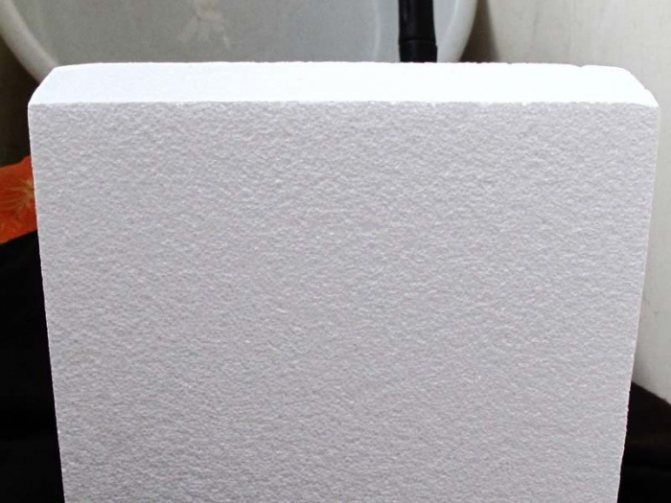

Material pluses:
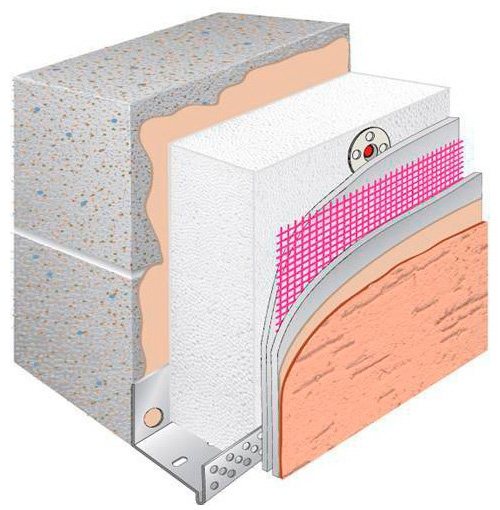

Note! You can also use expanded polystyrene. Its properties are very similar to polystyrene, only better. The material is durable and well processed.
Penofol
Practical material that is easy to work with. Due to the foil layer, the material additionally protects the wooden veranda from the cold.
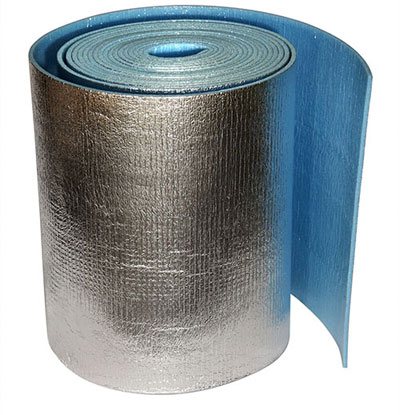

Material pluses:


Mineral wool
No less popular insulation than foam. Can be used as rolls or slabs. Minvata has earned the respect of many builders and is used very often to insulate verandas. It's all about its characteristics and advantages:
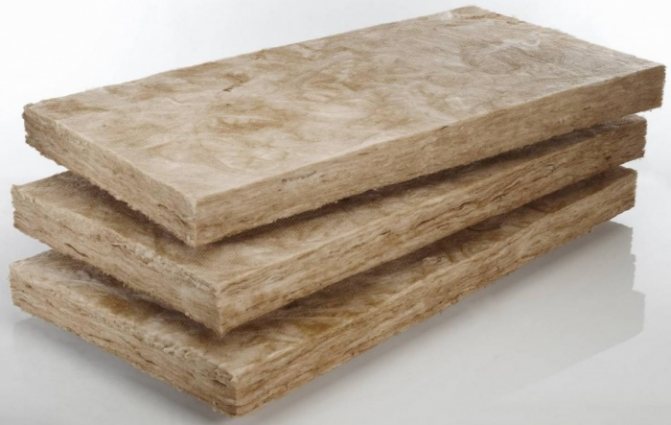

Important! One of the varieties of mineral wool is basalt wool. The material is biologically resistant, does not burn, resists moisture and is durable.
PPU (polyurethane foam)
An excellent material for insulation, which is applied by spraying. It can be compared to polyurethane foam, which increases several times after application. Although, on sale you can find ready-made panels that are mounted on the principle of foam.However, this method is worse than the spraying method. Why? When fixing the plates (this applies to foam, mineral wool and other plate and roll insulation) cold bridges are formed through which cold penetrates into the veranda. And when spraying, a monolithic layer without gaps is created.
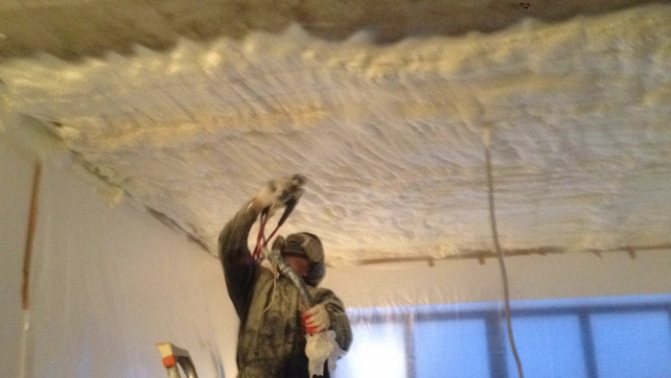

Material pluses:
Advice! With all this, PPU is quite expensive, and for its application you need to have special equipment. In addition, the material is vapor-tight.


It is from this list of materials that you can choose the insulation that you like the most. With it, your veranda will be reliably insulated. Start from the characteristics of the material, as well as from your financial capabilities. If you have already chosen, then you can proceed with the insulation itself.
We insulate the foundation of the veranda
High-quality insulation is reduced to the elimination of heat loss through each structure. After all, the task of insulation is not only to prevent the penetration of cold. The main task is to preserve the heat generated by the heating system of the room. It is noteworthy that the veranda is most often built on the same foundation as the entire house. Most often, the base is cast concrete or slabs. It is they who are the cold bridge, through which about 20% of the heat leaves. Therefore, first you need to take care of the insulation of the foundation and basement.
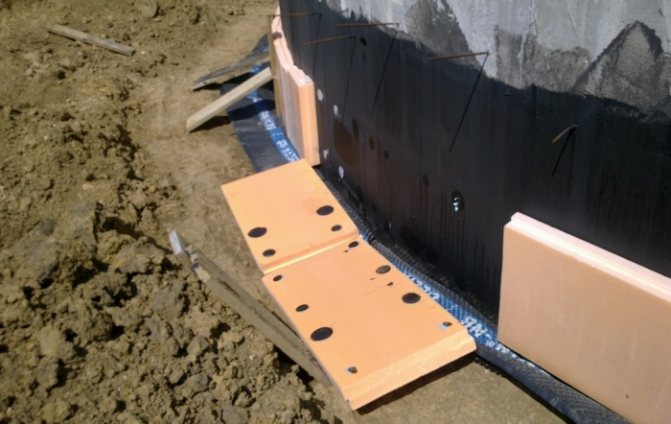

Styrofoam is the ideal material for this job. It is cheap, lightweight, and resists outside influences well. Warming the veranda with foam is one of the most common options. So, what you need to do to insulate the foundation:
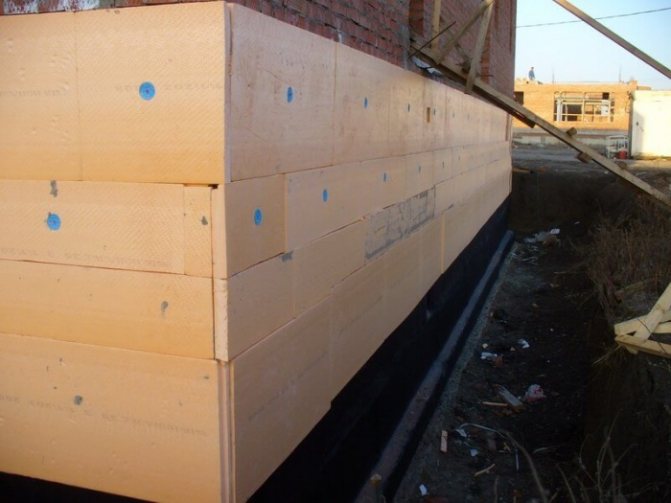

That's it, the job is done. You need to protect the entire foundation, right down to the basement. And the foam itself is revetted with any material.
How to insulate the foundation of a wooden house outside
The foundation of a wooden house can be insulated during construction. Between the foundation and the frame of the house, lay out heat and waterproofing. If this is not possible, the insulation should be carried out outside along the foundation. This will help to properly insulate the house.
The concrete base must be checked for cracks and chips, and they must be sealed with cement-polymer compounds. You can insulate the foundation by installing a brick box, polystyrene, polyurethane foam. In the first case, you need to indent 30 centimeters from the base and build a brick wall in height equal to the foundation. Between it and the base, pour expanded clay, cover the surface with waterproofing and mineral wool. Another way is to paste over the walls of the base with expanded polystyrene or spray on polyurethane foam. First, prepare the concrete base, install a waterproofing membrane, insulation, reinforcing mesh and plaster.
We insulate the floor in the veranda
Floor is another source of heat loss in verandas and terraces. Most often, the floors in the veranda are made of concrete screed. Sometimes wood is used (by the way, it is warmer). In the event that you plan to make a warm floor in the veranda, we recommend that you stay on the electric heating system to turn on the system as needed. As for water insulation, it is better to refuse it on the veranda. In frosty weather, pipes may freeze and deform. Then the system will need to be replaced completely. How to make a warm floor on the veranda is shown in this video.
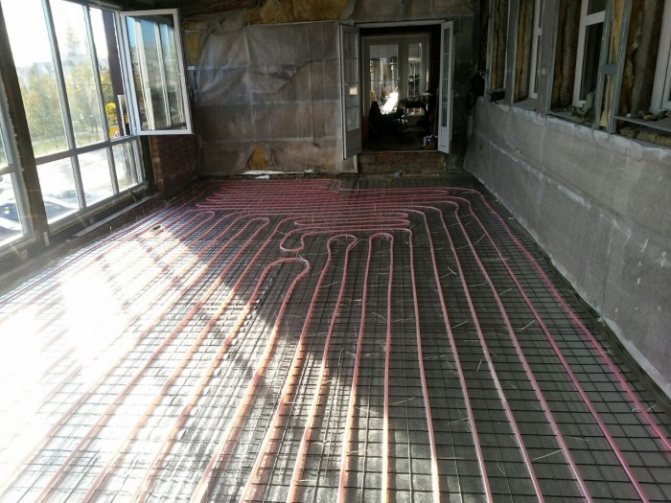

But what if you don't want to use underfloor heating technology? It is possible to insulate the floor on the veranda in a simple way "along the logs". Here's what you need to do this:


To make the walls warmer
The largest area of contact with the cold is at the walls. You can insulate the veranda outside and inside. Insulation of the veranda from the inside is done if the building is finished on the outside with expensive high-quality materials that are a pity to open.
How to insulate a veranda from the inside:
- All cracks in the wooden walls must be repaired.
- Fill the battens of the battens at intervals equal to the width of the insulation boards, this will allow the wall to be sewn up evenly and without gaps.
- Use a stapler to attach a film for moisture insulation to the slats.
- If interior decoration with plasterboard is planned, then at this moment it is necessary to mount a crate made of metal profiles.
- Place mineral wool slabs in the gaps of the profiles, you can use mounting dowel-umbrellas.
- Fix the waterproofing film over the heat insulator with a stapler.
- Mount plasterboard finishing boards on the metal profile.
- Putty and paint the walls.
We insulate the walls of the veranda
A lot of heat escapes through the walls. This is why insulating veranda walls is so important. You can insulate the walls from the inside with foam, polyurethane foam or mineral wool. You decide. However, the insulation technology is almost identical. Your task is to create a crate so that this or that material can be laid in it. In fact, the work resembles floor insulation, only in the vertical plane.
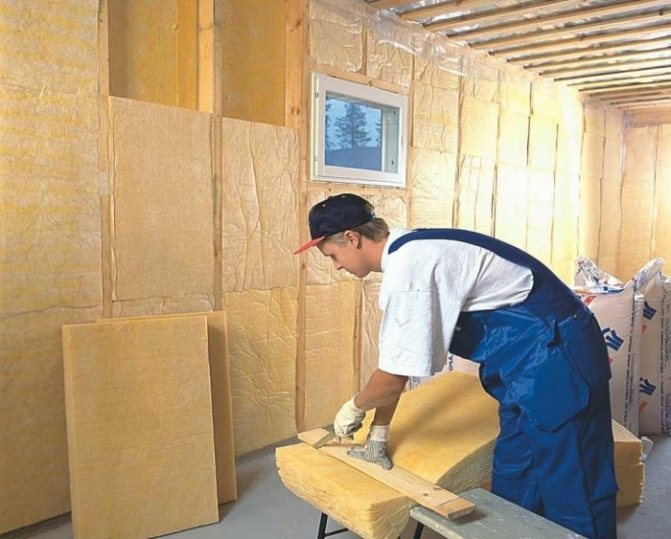

When the veranda is made of wood, the insulation takes place in this way:
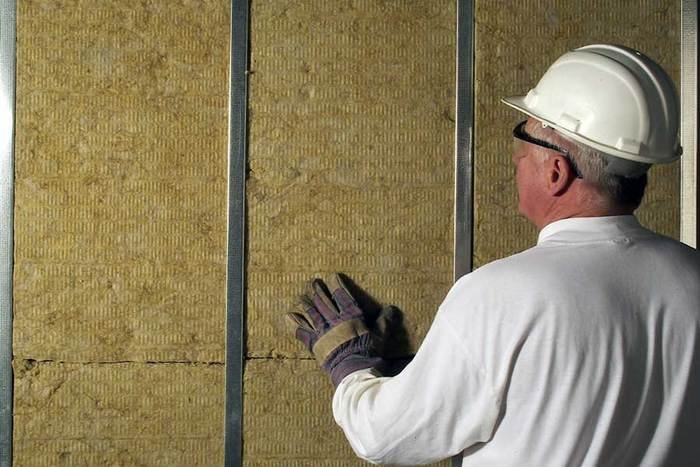

Note! Insulation is done on the outside in the same way. Only here the finishing material should not be afraid of moisture and external influences. It can be facade paint or plaster, bark beetle, siding.
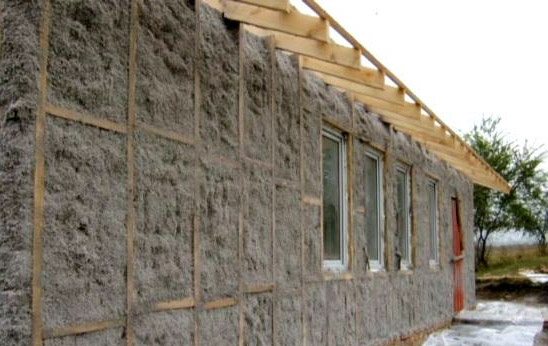

If the veranda has concrete walls, then you can insulate it with foam. Everything is somewhat simpler here. It is necessary to glue the foam plates to the wall with special glue, and then strengthen the fixation with dowels with an umbrella. Further, the surface of the slabs is coated with an adhesive solution into which the reinforcing mesh is embedded. After drying, you can do decorative plaster (bark beetle, fur coat, etc.).
Insulation stages
- A layer of vapor barrier film is applied to the concrete base. Insulation joints for the overall tightness of the layer must be carefully glued with tape.
- Insulation plates are laid on top of the waterproofing material. It is important that the blocks fit snugly together, there are no gaps and crevices left.
- The entire room is pasted over with a damper tape around the perimeter.This is necessary to compensate for expansion of the screed.
- On top of the mineral wool insulation, another layer of vapor barrier is applied and then a reinforcing mesh.
- The screed is poured. Its thickness must be at least 3 cm.
- After the surface has completely dried, any topcoat is applied.
We insulate the windows of the veranda and doors
Windows are almost the main source of heat loss. If they are old and have cracks, then the heat successfully leaves the room. To eliminate the problem, you can blow out all the cracks and holes with polyurethane foam. But, sometimes this method simply does not help. The point is that the windows can be very old. In this case, we recommend that you replace them with new ones made of metal-plastic. As you know, they perfectly retain heat in the room, not letting in the cold.


Among other things, such windows will isolate the veranda from noise. The installation of plastic windows is not an easy task, however, the companies that sell them provide such services. You can take advantage of them, saving you energy, time and nerves. And professionals will not make mistakes in editing, which can become fatal.
Note! Plastic windows can be single-chamber, two-chamber or three-chamber. It is not worth saving money and buying single-chamber double-glazed windows. We recommend that you choose the warmer options. A two-chamber window is enough.
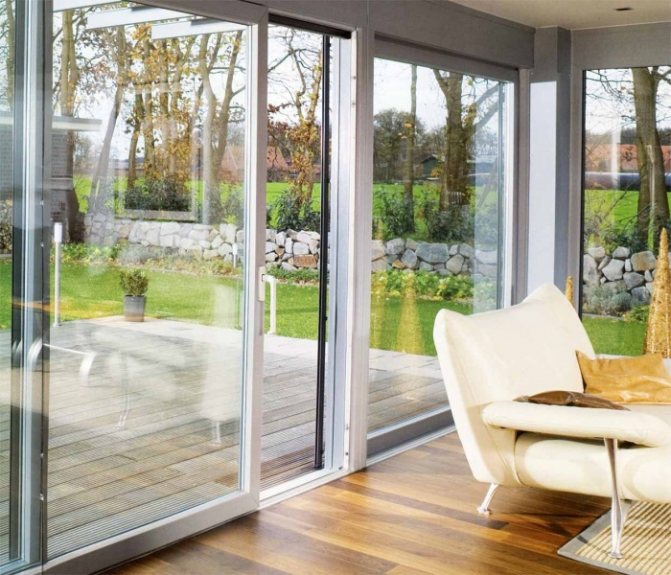

As for the doors, they need to be upholstered with felt or other insulation from the inside and outside. Rubber seals can be installed on a wooden box. Examine the places where the door frame connects to the opening. If you find cracks and holes, fill them with polyurethane foam.
We insulate the ceiling of the veranda
At the end of the whole complex of warming the room, it remains to take care of the ceiling. This is not an easy job for them, as the work is carried out at a height. Nevertheless, if you choose the right technology and insulation material, then everything will work out.


There are two options for ceiling insulation:
- attic;

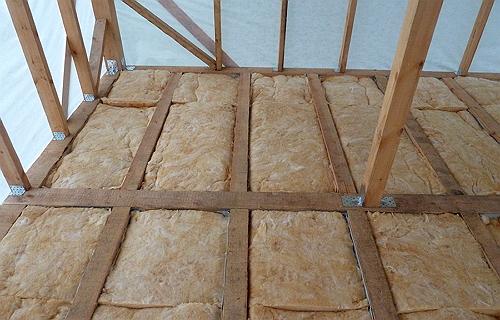
- insulation from the inside.
The first option is most often done during the construction phase. Although, nothing prevents you from doing it later. Its advantage is that the ceiling does not lose its height, and the room does not shrink. The work is simple: you just need to put the insulation material in the rafter frame and sew everything up with foil.
As for insulation from the inside, there are difficulties here. There are 3 different options for insulating the ceiling from the inside:


That's all, now your veranda is completely isolated from the cold and can withstand any frost. It is clear that for this you need to spend a lot of money, effort, time and nerves, but the result is worth it.
